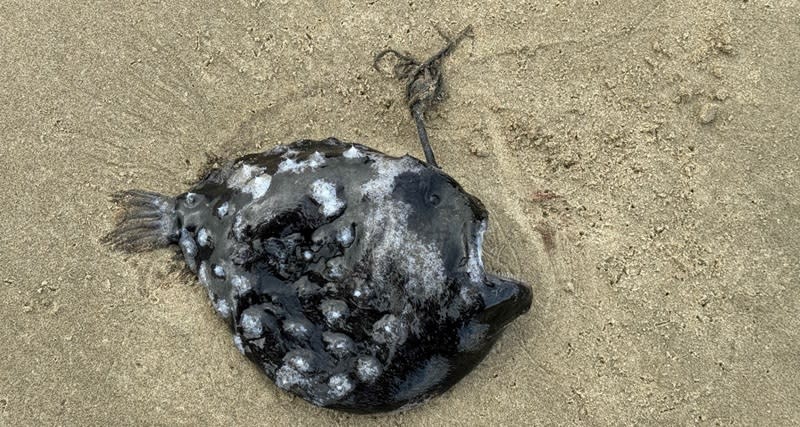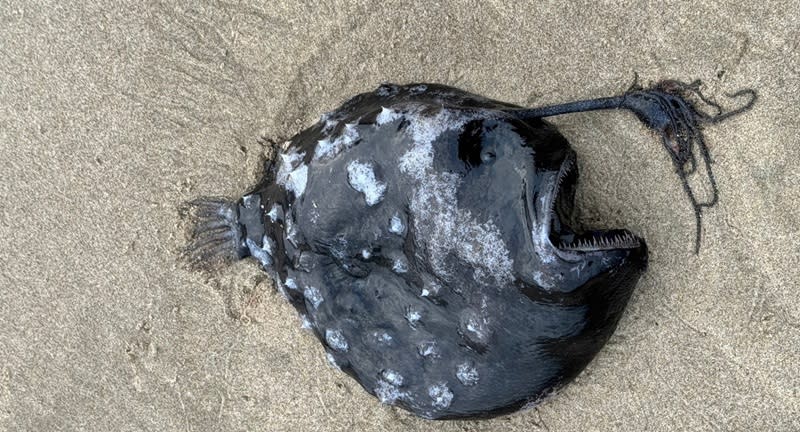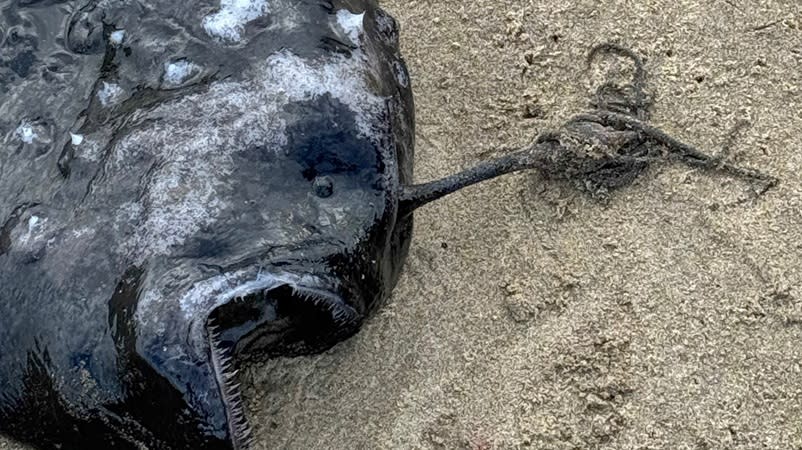Rare fish found near Cannon Beach, 1st time in Oregon
PORTLAND, Ore. (KOIN) — For the first time in anyone’s knowledge, a fish that lives in complete darkness deep in the ocean washed up on shore near Cannon Beach, the Seaside Aquarium said.
Beachcombers found the deep-sea angler fish, also called a Pacific football fish, just south of Cannon Beach, the aquarium said.
“Only 31 specimens have been recorded around the world,” the aquarium said, and only “a handful of football fish have been recorded in New Zealand, Japan, Russia, Hawaii, Ecuador, Chile, and California.” But as far as anyone knows, this is the first time a Pacific football fish has been reported along the Oregon coast.
A deep-sea angler fish, also known as a Pacific football fish, was found near Cannon Beach. It may be the first time ever this fish has been spotted along the Oregon coast. May 18, 2024 (Seaside Aquarium) A deep-sea angler fish, also known as a Pacific football fish, was found near Cannon Beach. It may be the first time ever this fish has been spotted along the Oregon coast. May 18, 2024 (Seaside Aquarium) A deep-sea angler fish, also known as a Pacific football fish, was found near Cannon Beach. It may be the first time ever this fish has been spotted along the Oregon coast. May 18, 2024 (Seaside Aquarium)
These fish live 2000 to 3300 feet deep in the ocean and “they use light that shines from a phosphorescent bulb on their forehead to attract prey.” The males are 10 times smaller than females, they lose their eyes and their internal organs and get all their nutrients from the females.
“The males are more like parasites,” the Seaside Aquarium said, and though it’s unknown how they find the females in the complete darkness without eyes, they provide the females “with a steady source of sperm.”
KOIN 6 News will have more information as it develops.
Copyright 2024 Nexstar Media, Inc. All rights reserved. This material may not be published, broadcast, rewritten, or redistributed.
For the latest news, weather, sports, and streaming video, head to KOIN.com.



